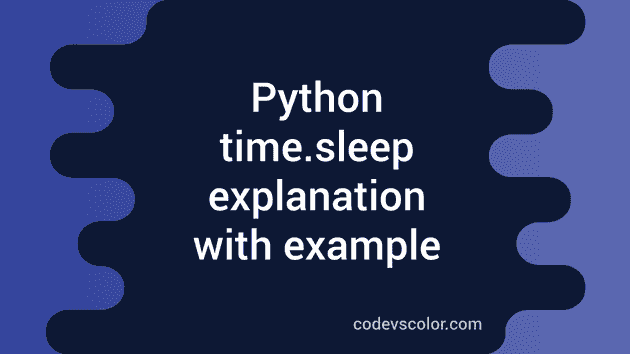How to sleep in python using time.sleep() method :
In python, we have one method to pause the execution of a program : ‘sleep()‘. This method is available in ‘time’ module. In this tutorial, we will learn how to pause a program for a specific time interval using sleep.
Syntax of Python time.sleep() :
time.sleep(secs)
Explaination :
Only argument we are passing here is ‘secs’ which is the time interval in seconds we want to sleep the program. ‘secs’ is a floating value. That means if we pass ‘.5’ , it will sleep for 500 miliseconds.
Simple example of time.sleep():
import time
print ("Starting the program...")
time.sleep(3)
print("Sleeped for 3 seconds")
If we run the above program, it will print the first line, then next it will sleep for 3 seconds and then after 3 seconds , it will print the last statement. We can also print the time before and after sleep. This will help us to check the exact time it sleeps :
time.sleep() with printing time :
import time
print ("Starting the program...")
print ("Start time : ",time.strftime("%H:%M:%S"))
time.sleep(3)
print ("End time : ",time.strftime("%H:%M:%S"))
print("Sleeped for 3 seconds")
Output :
Starting the program...
Start time : 18:46:48
End time : 18:46:51
Sleeped for 3 seconds
So, it slept for exactly 3 seconds.

